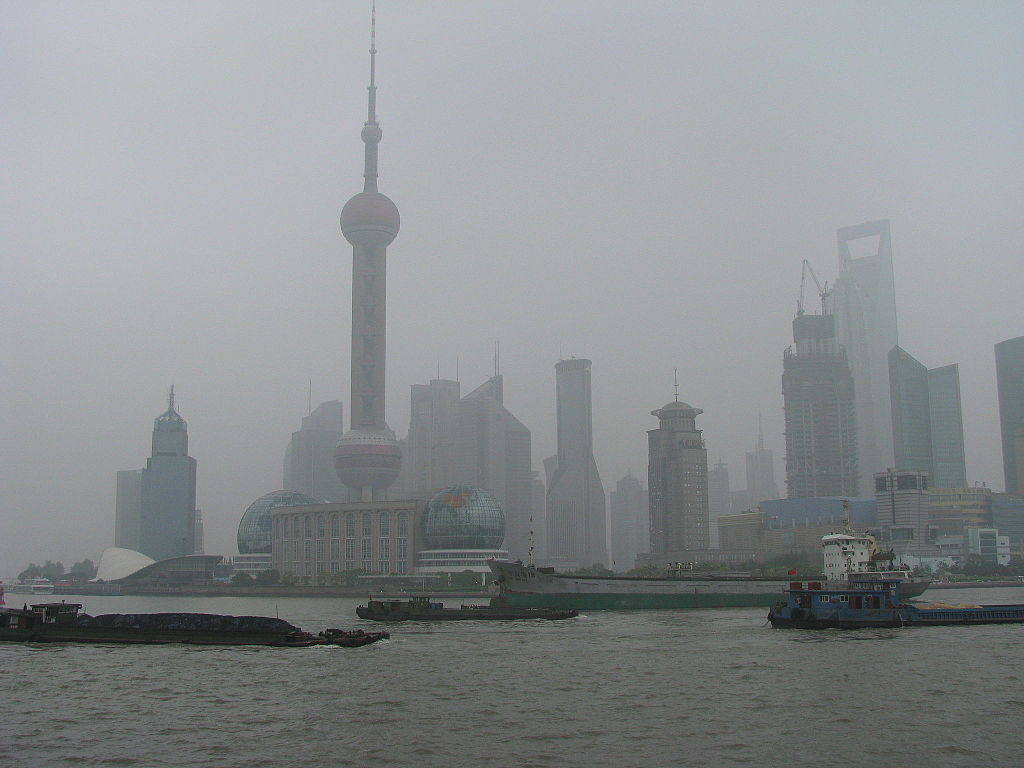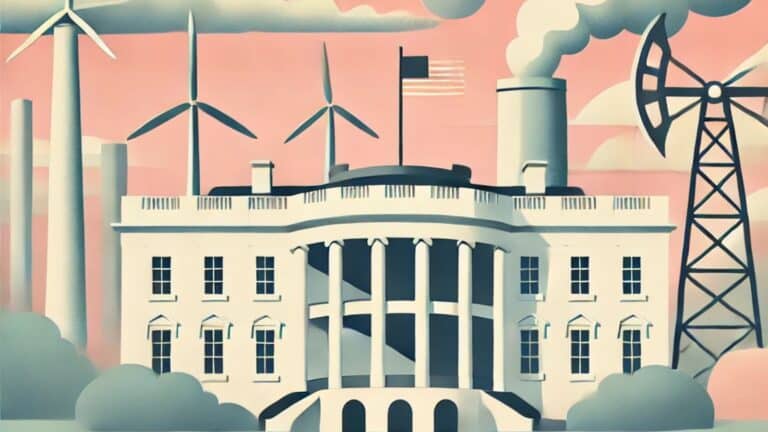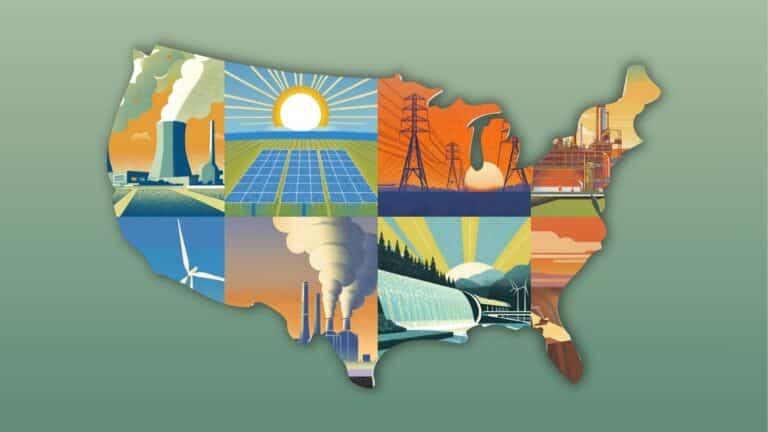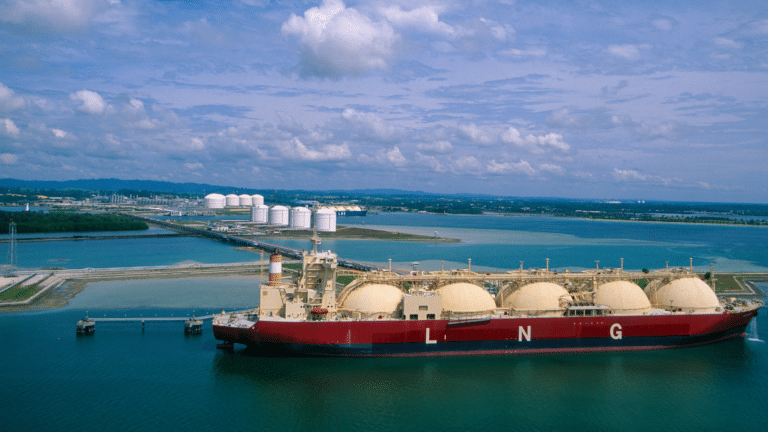This Energy Explained post represents the research and views of the author. It does not necessarily represent the views of the Center on Global Energy Policy. The piece may be subject to further revision. Contributions to SIPA for the benefit of CGEP are general use gifts, which gives the Center discretion in how it allocates these funds. Rare cases of sponsored projects are clearly indicated.
For a full list of financial supporters of the Center on Global Energy Policy at Columbia University SIPA, please visit our website at Our Partners. See below a list of members that are currently in CGEP’s Visionary Circle. This list is updated periodically.
A new report published by the Center on Global Energy Policy (CGEP) at Columbia University SIPA, “China’s Climate Disclosure Regime: How Regulations, Politics, and Investors Shape Corporate Climate Reporting,” provides a comprehensive English-language analysis of China’s climate disclosure regime— the regulations, pressures, and informal norms that shape companies’ decisions to publicize climate-related information about their businesses.[1] The report provides a baseline survey of climate disclosure quality based on a review of the disclosures of some of China’s largest carbon emitters. In this Q&A, the authors unpack the main findings of the report, which discusses the distinctive features of China’s climate disclosure regime, what China’s largest carbon emitters disclose, how that compares with their international peers, and how China’s disclosure regime is likely to evolve.
What companies does the report cover?
The report covers 39 of China’s largest carbon-emitting firms—its “carbon majors.” Two features of the carbon majors are worth highlighting:
- These companies dominate seven high-emitting industries that the Chinese government has proposed for coverage in its emissions trading system: thermal power, iron and steel, cement, aviation, petrochemicals, chemicals (ammonia and methanol), and aluminum.
- Compared to other countries, a large share of China’s carbon majors are state-owned unlisted companies; 31 of these 39 firms are state-owned and 20 are unlisted.
What does China’s climate disclosure regime look like?
China’s carbon disclosure regime has three pillars: regulatory compliance, political expectations, and international investor pressure.
Regulatory Compliance: Listed and unlisted companies must adhere to the government’s climate-related information regulations. In 2014, Beijing began to require some firms to report CO2 emissions to the government internally.[2] In 2021, the Ministry of Ecology and Environment (MEE) introduced a framework for mandatory emissions disclosure by large and medium-sized firms; this framework has been implemented within the power sector and will expand to heavy industry in the coming years.[3]
Listed companies must follow their exchanges’ policies on the disclosure of climate-related information. The Hong Kong Stock Exchange (HKEX) has a “comply or explain” rule for the disclosure of Scope 1 and Scope 2 emissions[4] as well as discussions of climate risks and actions taken to manage them. Noncompliance requires an explanation from the filing company.[5] Mainland stock exchanges lack mandatory climate disclosure requirements.
Political Expectations: The party-state’s unique role in Chinese capital markets as an owner, financier, and political authority, with broad discretionary powers, encourages Chinese companies to make certain kinds of climate disclosures to signal their alignment with Beijing’s political priorities. This incentive is especially strong with respect to state-owned enterprises (SOEs); numerous SOEs released carbon peaking and carbon neutrality goals and decarbonization plans after China’s leader, Xi Jinping, announced China’s goals of peaking carbon emissions by 2030 and achieving carbon neutrality by 2060.[6]
International Investor Pressure: International investors can motivate Chinese companies to make more thorough climate disclosures, especially with respect to discussions of climate risks and the assignment of board-level responsibilities for climate. For example, after Federated Hermes began to engage with Sinopec Corp. on climate change, the company established internal task forces to evaluate climate risks and opportunities.[7] In contrast, China’s mainland investors are not a source of pressure for stronger climate disclosures.
What do China’s largest carbon emitters disclose about climate change?
The three pillars help account for variation among the climate disclosures of China’s carbon majors.
Stricter regulatory requirements and greater exposure to international investors explains why HKEX-listed companies’ disclosures around emissions volume, climate risks, and board-level climate responsibilities are generally more comprehensive than their unlisted and mainland-listed peers. HKEX-listed companies account for 15 of the 18 carbon majors that disclose Scope 1 and Scope 2 emissions and all seven of the carbon majors that assign climate responsibilities to the board.[8] Several HKEX-listed firms identify different categories of climate risks and remedies.[9]
SOEs are relatively strong at disclosing emissions targets and mitigation plans, reflecting political expectations that SOEs use such disclosures to demonstrate support for China’s national carbon peaking and neutrality goals. Ten of the 20 unlisted carbon majors have set specific and time-bound targets for reducing or mitigating carbon emissions growth, and 8 of the 10 are owned by the central government.[10] Similarly, SOEs account for 12 of the 14 carbon majors that disclosed at least somewhat detailed plans or visions that could support deep emissions cuts across all of their emissions pathways.[11]
How do the climate disclosures of China’s large emissions-intensive firms compare to those of their international peers?
Analysis of disclosure quality data from the Transition Pathway Initiative that covers large, emissions-intensive Chinese firms and their peers in developed and developing countries indicates that Chinese firms’ disclosures lag their peers’ on several fronts. Disclosure gaps are especially noteworthy in sectors with a heavy presence of unlisted firms, such as steel and thermal power generation. The authors’ survey of China’s carbon majors found that unlisted companies rarely report their carbon footprints; sectors in which these firms concentrate have especially limited disclosure levels.[12]
Why do Chinese firms’ climate disclosures lag behind those of their international peers?
A pattern of weaker disclosures among Chinese firms aligns with the distinctive role of China’s party-state in China’s climate disclosure regime. It is an unusually important audience for Chinese firms’ environmental, social, and governance (ESG) reports, which could affect corporate incentives around disclosures in two ways.[13]
First, the centrality of the party-state as an audience for ESG reporting may tie Chinese firms’ reporting practices more closely to formal requirements than their international peers, especially Western firms whose practices are often influenced by shareholder demands. Regulatory requirements are the clearest signal of state priorities on more niche topics such as climate risk, and firms may see little reason to disclose without them.
Second, some types of climate disclosures valued by private investors may be less important to the party-state. For example, disclosures of climate change responsibilities assigned to the board provide private investors with a way to influence and monitor how boards incorporate climate change into their mandates. However, the party-state has more direct tools to those ends. It controls leadership appointments at SOEs and can impose these responsibilities as part of its performance evaluation system. The state may not even need firms to set targets themselves because it can assign targets to them.
How is China’s climate disclosure regime likely to evolve, and what does that mean for China’s low-carbon transition?
China’s climate disclosure landscape is rapidly evolving, particularly on the regulatory front, in ways that should support China’s national decarbonization goals. China’s Ministry of Ecology and Environment aims to establish a “mandatory environmental information disclosure system” by 2025.[14] The State-Owned Assets Supervision & Administration Commission expects all listed central SOEs to release ESG reports by 2023.[15] As part of a broader emphasis on ESG reporting, listed companies in China are likely to face more stringent climate disclosure requirements.
Beijing intends to expand China’s emissions trading beyond power generation to seven other major carbon-emitting sectors, requiring emission reporting by unlisted firms in these sectors.[16] Consequently, climate-related data should become more transparent and accessible.
Yet, Chinese companies may not be incentivized to go beyond the minimum disclosure requirements, particularly for topics that are not underlined by regulatory mandates or political directives. This contrasts with the approach seen in many other markets, where shareholder demands often drive companies to adopt more comprehensive climate disclosure practices, even in areas not dictated by regulation.
CGEP’s Visionary Circle
Corporate Partnerships
Occidental Petroleum Corporation
Tellurian Inc
Foundations and Individual Donors
Anonymous
Anonymous
the bedari collective
Jay Bernstein
Breakthrough Energy LLC
Children’s Investment Fund Foundation (CIFF)
Arjun Murti
Ray Rothrock
Kimberly and Scott Sheffield
Notes
[1] Edmund Downie, Erica Downs, and Yushan Lou, “China’s Climate Disclosure Regime: How Regulations, Politics, and Investors Shape Corporate Climate Reporting,” Center on Global Energy Policy, Columbia University, November 29, 2023, https://www.energypolicy.columbia.edu/publications/chinas-climate-disclosure-regime-how-regulations-politics-and-investors-shape-corporate-climate-reporting/.
[2] State Council, “Notice of the State Council General Office on Printing and Distributing the Action Plan for Energy Conservation, Emission Reduction, and Low-Carbon Development in 2014-2015” (国务院办公厅关于印发2014-2015年节能减排低碳发展行动方案的通知), May 5, 2014, http://www.gov.cn/zhengce/content/2014-05/26/content_8824.htm.
[3] Ministry of Ecology and Environment, “Measures for the Administration of Legal Disclosure of Enterprise Environmental Information” (企业环境信息依法披露管理办法), December 21, 2021, https://www.mee.gov.cn/xxgk2018/xxgk/xxgk02/202112/t20211221_964837.html.
[4] Scope 1 emissions are direct emissions from sources owned or controlled by a company. Scope 2 emissions are indirect emissions from the generation of energy purchased by a company. Greenhouse Gas Protocol, “FAQ,” https://ghgprotocol.org/sites/default/files/standards_supporting/FAQ.pdf.
[5] Hong Kong Stock Exchange, “Rules and Guidance,” appendices 14 (Corporate Governance Code) and 27 (Environmental, Social and Governance Reporting Guide”), available at https://en-rules.hkex.com.hk/rulebook/appendices-0.
[6] See, for example, China Datang Corporation Limited, “2021 Social Responsibility Report” (2021年社会责任报告), 7, 15, and 16, https://news.bjx.com.cn/html/20220908/1253881.shtml; and China Baowu Iron and Steel Group Co., Ltd., “2021 Corporate Social Responsibility Report,” 22–31, https://res.baowugroup.com/attach/2022/08/08/b54e4736c3a3439a956a03aae9095980.pdf.
[7] Hermes EOS, “Case study summaries,” January 2019, 2, https://www.fifepensionfund.org/media/povfsb45/hermes-eos-case-study-summaries-2018.pdf.
[8] Downie, Downs, and Lou, “China’s Climate Disclosure Regime,” 19–24.
[9] See, for example, Anhui Conch Cement Company Limited, “2021 Social Responsibility Report,” 39, https://www1.hkexnews.hk/listedco/listconews/sehk/2022/0325/2022032501601.pdf; China Shenhua Energy Corporation Limited, “2021 Environmental, Social and Government Report,” 40, http://www.csec.com/zgshwwEn/csrrpt2021/202203/9154e7bf027f4bb6898593ae4eb817b4/files/933a55f43806434c9dfa5e902a397868.pdf; PetroChina Company Limited, “2021 Environmental, Social and Government Report,” 35, http://www.petrochina.com.cn/petrochina/xhtml/images/shyhj/2021esgen.pdf; and Sinopec Corp., “2021 Sustainability Report,” 29, http://www.sinopecgroup.com/group/en/Resource/Pdf/SustainReport2021en.pdf.
[10] Downie, Downs, and Lou, “China’s Climate Disclosure Regime,” 26–27.
[11] Downie, Downs, and Lou, “China’s Climate Disclosure Regime,” 28.
[12] Downie, Downs, and Lou, “China’s Climate Disclosure Regime,” 30 and 48–53. TPI data is available at Transition Pathway Initiative, “TPI Online Tool,” https://www.transitionpathwayinitiative.org/sectors.
[13] For more on the use of CSR or ESG reports to signal political compliance, see Irina Ervits, “CSR reporting in China’s private and state-owned enterprises: A mixed methods comparative analysis,” Asian Business & Management, February 9, 2021, https://link.springer.com/article/10.1057/s41291-021-00147-1; and Christopher Marquis and Cuili Qian, “Corporate Social Responsibility Reporting in China: Symbol or Substance?” Organization Science, Vol. 25, No. 1 (January-February 2014), pp. 127-148, JSTOR.
[14] Ministry of Ecology and Environment, “Notice on Printing and Distributing the Reform Plan for the Legal Disclosure of Environmental Information (关于印发《环境信息依法披露制度改革方案》的通知), May 24, 2021, https://www.mee.gov.cn/xxgk2018/xxgk/xxgk03/202105/t20210525_834444.html.
[15] The State-owned Assets Supervision and Administration Commission of the State Council, ” Work Plan for Improving the Quality of Listed Companies Controlled by Central Enterprises” (提高央企控股上市公司质量工作方案), May 27, 2022, https://www.gov.cn/xinwen/2022-05/27/content_5692621.htm.
[16] Xiaonan Feng, “China’s National ETS Update: Free Allowances Tightened But Overall Cost Increase Still Limited,” S&P Global Blog, April 10, 2023, https://www.spglobal.com/commodityinsights/en/ci/research-analysis/chinas-national-ets-update-free-allowances-tightened.html#:~:text=In%20addition%20to%20the%20power,and%20short%2Dterm%20economic%20risks.










